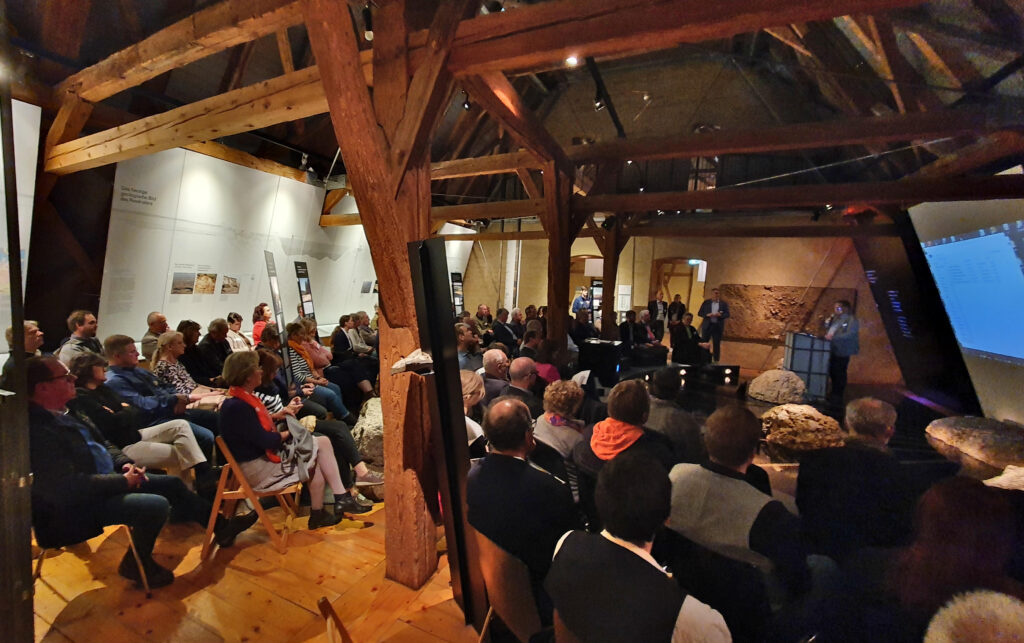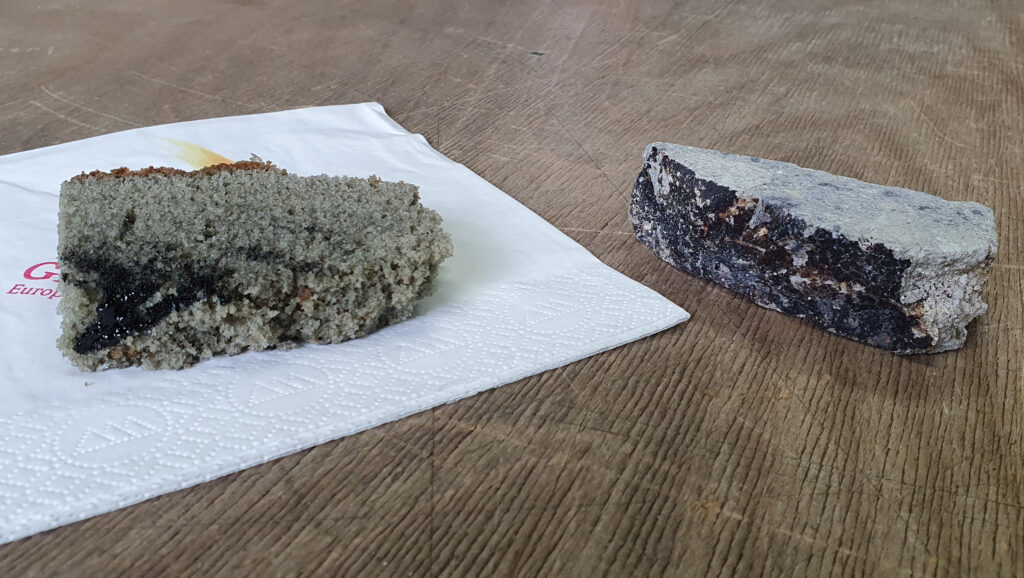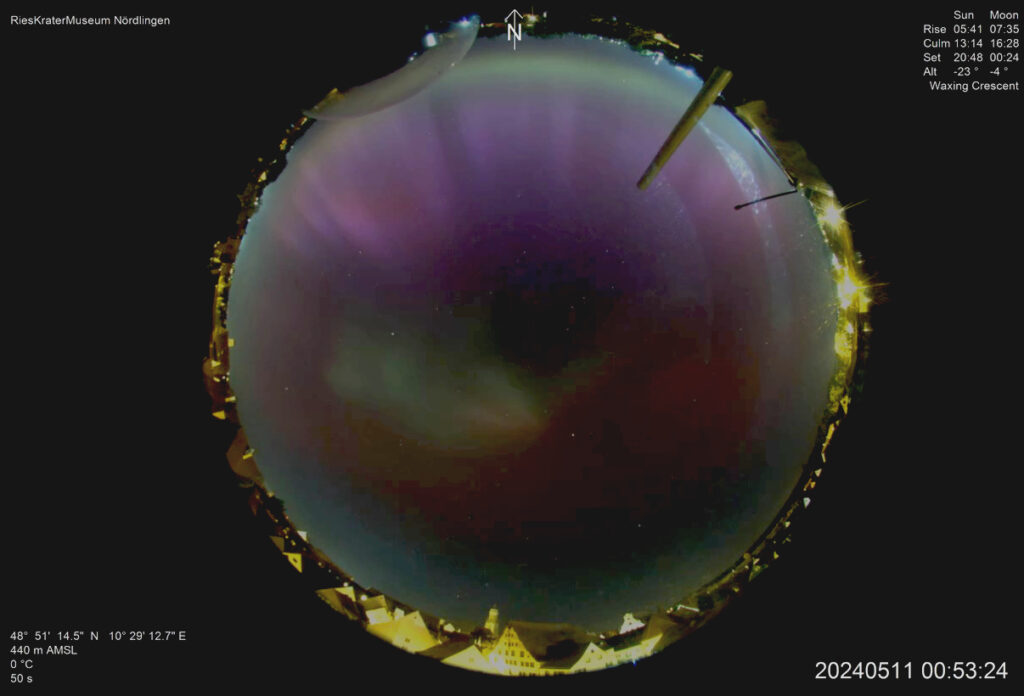Opening of the Special Exhibition “Rocky Roads to Life”
On March 13, 2025, the new special exhibition “Rocky Roads to Life” was opened at the RiesKraterMuseum with well over a hundred guests.
The special exhibition was developed by the RiesKraterMuseum. It aims to show unusual paths to a deeper understanding of life in dialog with the stones and to raise awareness of the fact that the geosphere and biosphere have been closely linked and connected by constant change since the beginning of life.
Introductory words by the museum director Prof. Stefan Hölzl were followed by words of welcome from the second mayor of the town of Nördlingen, Rita Ortler, and the Director General of the Bavarian State Collections of Natural History, Prof. Joris Peters.
An overview of the background, structure and significance of the exhibition was given by PD Dr. Frank Trixler, responsible for the conception, curation and texts of the exhibition. William Orsi, Professor of Geomicrobiology at the Ludwig Maximilian University of Munich, then spoke about his research on deep-sea vents and their significance in connection with theories on the origin of life. His doctoral student, Vanessa Helmbrecht, who produced the exhibits on the topic “Origin of life in the deep sea”, demonstrated the cultivation of these exhibits in the laboratory during the subsequent tour of the exhibition and answered questions from the guests.
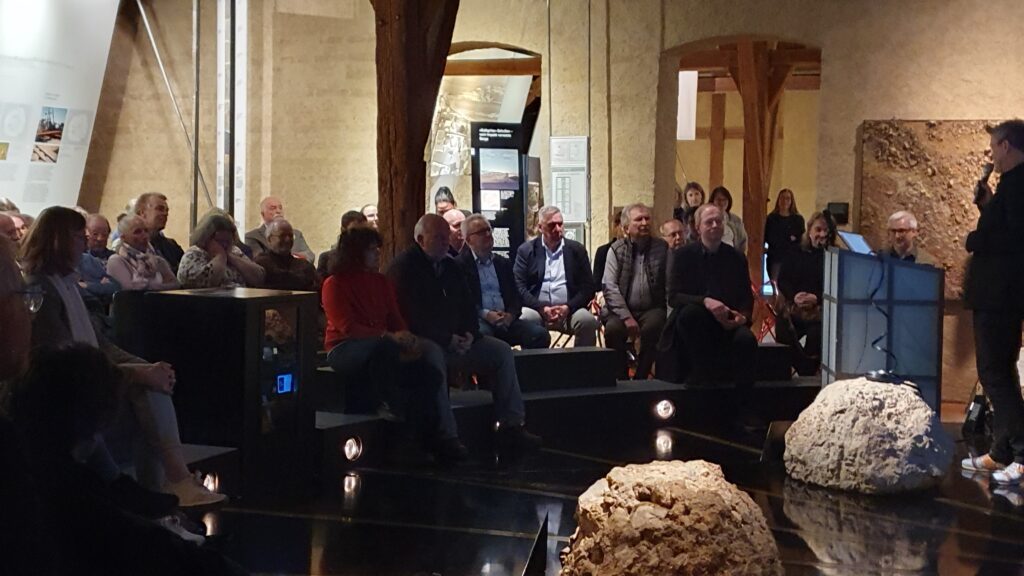
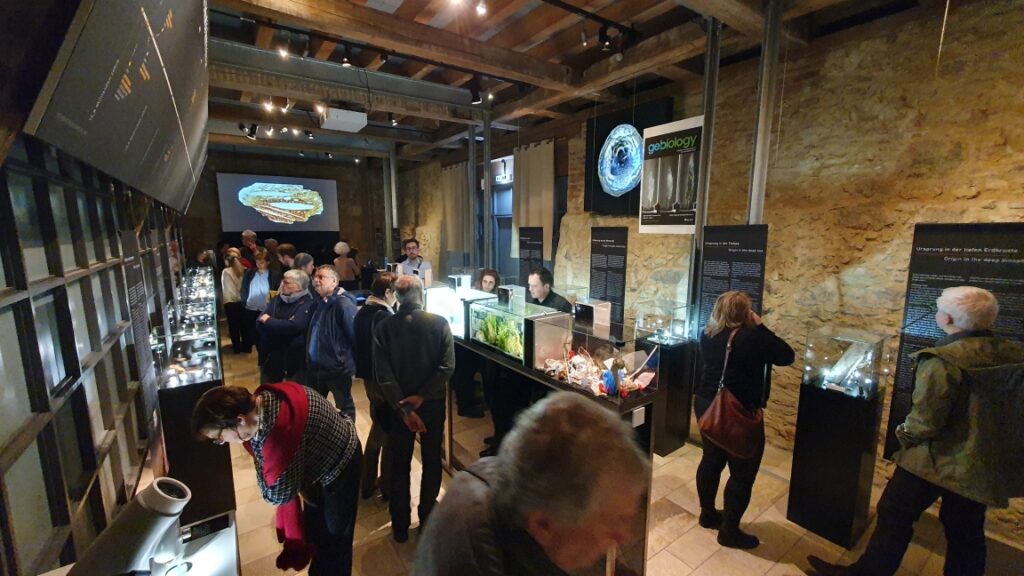
Opening of the new special exhibition: “Rocky Roads to Life”
On March 13, 2025, the new special exhibition “Rocky Roads to Life” was opened at the RiesKraterMuseum with 135 guests.
The special exhibition was developed by the RiesKraterMuseum. It aims to show unusual paths to a deeper understanding of life in dialog with the stones and to raise awareness of the fact that the geosphere and biosphere have been closely linked and connected by constant change since the beginning of life.Introductory words by the museum director Prof. Stefan Hölzl were followed by words of welcome from the second mayor of the town of Nördlingen, Rita Ortler, and the Director General of the Bavarian State Collections of Natural History, Prof. Joris Peters.
An overview of the background, structure and significance of the exhibition was given by PD Dr. Frank Trixler, responsible for the conception, curation and texts of the exhibition. William Orsi, Professor of Geomicrobiology at the Ludwig Maximilian University of Munich, then spoke about his research on deep-sea vents and their significance in connection with theories on the origin of life. His doctoral student, Vanessa Helmbrecht, who produced the exhibits on the topic “Origin of life in the deep sea”, demonstrated the cultivation of these exhibits in the laboratory during the subsequent tour of the exhibition and answered questions from the guests.
Link to the TV report


Micrometeorites: Dust from outer space – everywhere!
Between December 8, 2023 and February 23, 2025, the special exhibition “Micrometeorites: Dust from outer space – everywhere!” developed by the Ries Crater Museum, was presented.
Micrometeorites are cosmic dust particles that hit the Earth every day, mostly unnoticed by us. They can provide information about the solar system that larger meteorites do not possess. When they enter the atmosphere, the tiny rock particles are heated up and cool down again. This creates fascinating sculptures of crystals and glass.
With an average size of 100 – 400 µm, the cosmic dust particles are barely visible to the naked eye and are therefore very difficult to find. For a long time, it was considered impossible to detect such particles from space in populated areas among all the earthly dust and industrial pollution. Two researchers from Norway, Jon Larsen and Jan Braly Kihle, have succeeded for the first time in finding micrometeorites on house roofs and in gutters and have developed a special photographic technique to make the fascinating little spheres visible to the naked eye.
The special exhibition focuses on large-format photographs that allow visitors to immerse themselves in the strange, bizarre and extremely aesthetic world of these extraterrestrial particles.
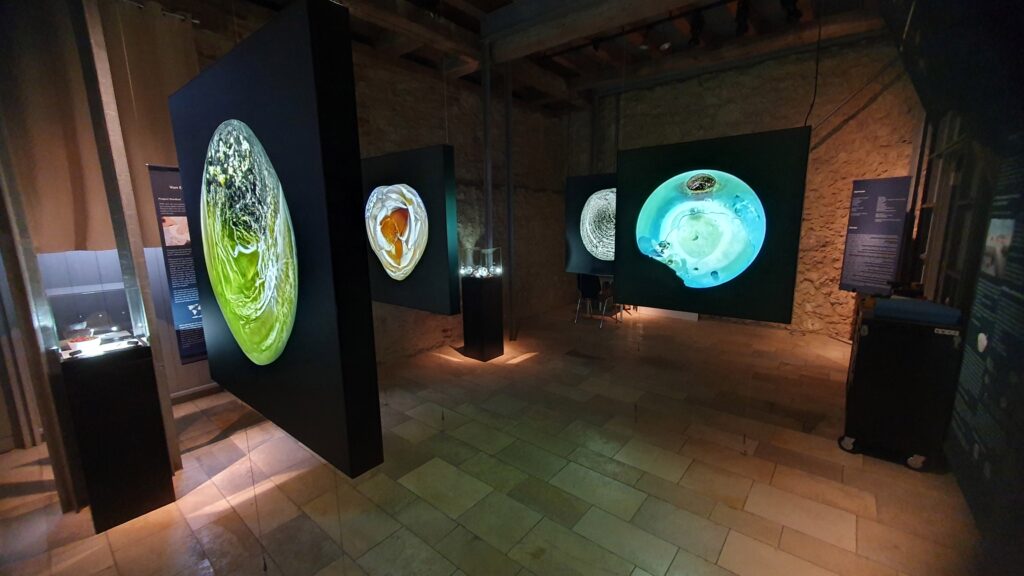
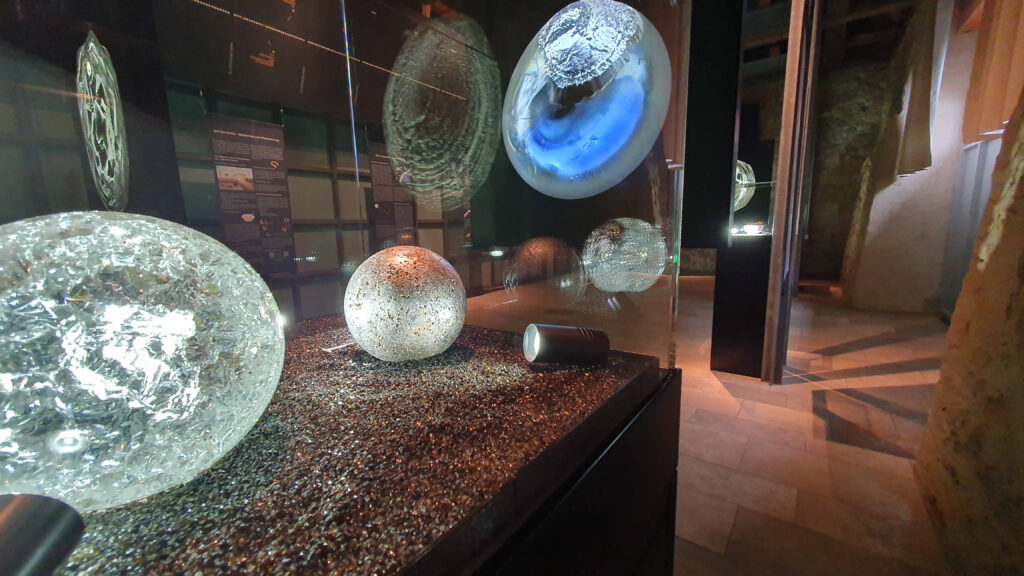
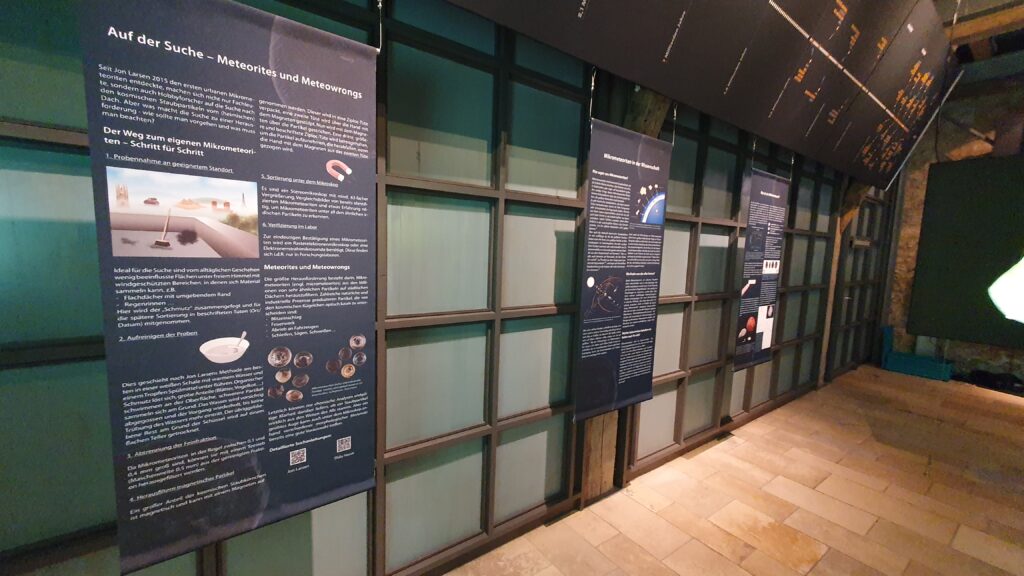
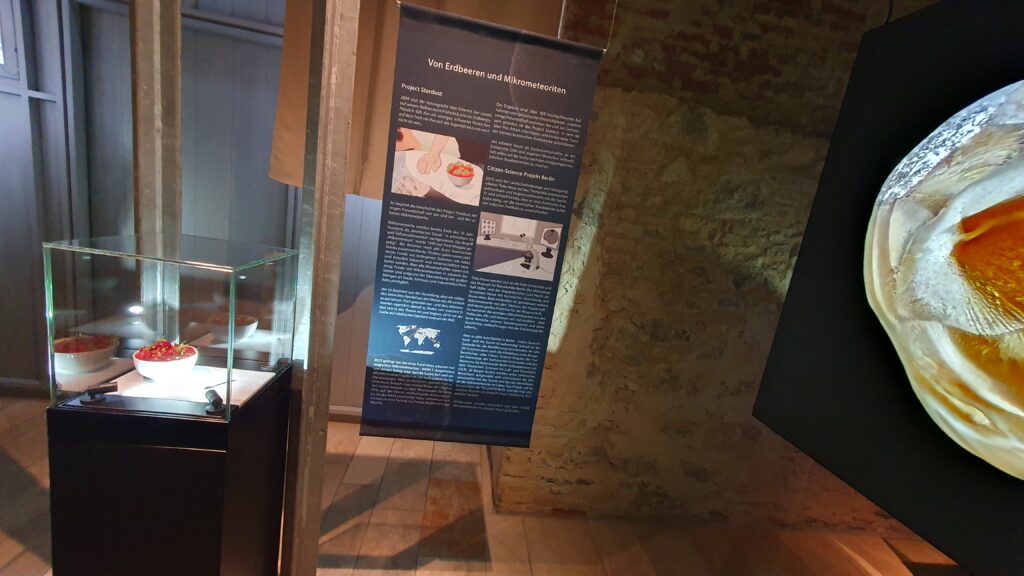
Download Impressum “Mikrometeoriten”
Blogs related to this special exhibition
Upcoming special exhibition “Rocky Roads to Life”
For billions of years, the world of rocks and life have been closely linked through the action of water. As a result, the mineral diversity of the earth and biological evolution are interrelated.
The new special exhibition “Rocky Roads to Life”, developed at the RiesCraterMuseum, focuses on the close relationship between rock and life. The exhibits open up various paths towards the origins, relationships and characteristics of the living world. These paths lead to three questions that run through the exhibition as a common thread: What role do rocks play in the origin of life? What interrelationships exist between rocks and life? And what is actually different about a living being compared to a stone?
The aim of the exhibition is to show unusual paths to a deeper understanding of life in dialog with the stones. It also raise awareness of the fact that the geosphere and biosphere have been closely linked and connected through constant change since the beginning of life.
The special exhibition at the RiesCraterMuseum opens to visitors on March 14, 2025 and runs until February 15, 2026.
The RiesCraterMuseum goes to school!
On the initiative of the RiesCraterMuseum, a display case was set up in the Theodor-Heuss-Gymnasium Nördlingen with objects showing original meteorites, impact rocks, fossils from Lake Riesse and archaeological artifacts.
The showcase is designed as a permanent exhibition in the school. The aim is to arouse curiosity through the authenticity of the original objects apart from organized museum tours and to be able to engage with the nature of these stones and their natural history in familiar surroundings without time pressure. Using the QR code attached, pupils can also quickly access the RiesKraterMuseum website to find out more about the objects, plan a visit to the museum or contact the museum staff. The location of the permanent exhibition in the school also makes it possible to have the exhibits available on site at any time as authentic illustrative material and tangible objects for geography, physics, chemistry and biology lessons.
Karin Heck selected and put together the exhibits and designed the display, curator Frank Trixler conceived and initiated this new type of museum outreach. Marcus Aunkofer, head of geography at THG, coordinated the project on behalf of the THG. Thanks to the facilitation of the project and approval of the objects by museum director Stefan Hölzl and the support of the realization by Renate Rachidi, principal of the THG Nördlingen, this new type of museum education could finally be realized in Nördlingen.
Link to the THG school webseite

Image credit: M. Aunkofer
RiesCraterMuseum the venue for the ESA astronaut training programm 2024
In mid-September 2024, the Ries and the RiesCraterMuseum were once again the venue for the European Space Agency’s “PANGAEA 2024” astronaut training program.
In addition to lectures and exercises, the program included several field excursions as well as visits to the museum and the drill core repository and isotope laboratory of the Center for Ries Crater and Impact Research “ZERIN”.
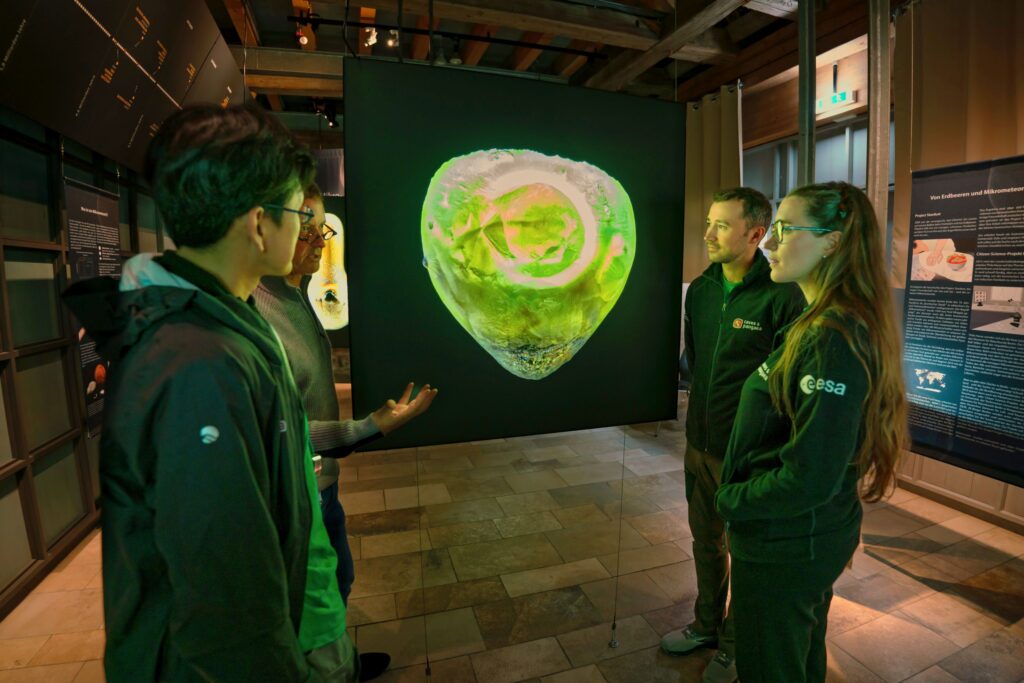
From left to right: Noroshige Kanai (JAXA, Japan), Museum Director Prof. Dr. S. Hölzl, Arnaud Prost (ESA FR) and Dr. Rosemary Coogan (ESA UK) in the current special exhibition “Micrometeorites” at the RKM (Photo: ESA)
Cultural Festival Nördlingen: Program of the RiesCraterMuseum on 09/21/2024
The RiesCraterMuseum is taking part in the Nördlingen Cultural Festival on September 21th, 2024. The program includes three items:
- live simulations of cosmic events in the style of “what if…?” questions. The simulations will be projected onto the museum’s movie screen;
- Live examinations using X-ray fluorescence of rocks that visitors can bring with them;
- Guided tours through the special exhibition “Micrometeroites: Dust from Outer Space – Everywhere!”.
The cultural festival program of the museum takes place between 18:30 and 22:30.
Download the program of the RiesCraterMuseum
Northern lights over Nördlingen
n the night from May 10 to 11, 2024, the AllSky camera of the RiesCraterMuseum was able to capture northern lights over the sky of Nördlingen for several hours. An animation can be seen here.
The unusual visibility of an aurora borealis for this latitude is due to the strongest geomagnetic storm in 11 years, triggered by an X1.0 class solar flare.
Aurora borealis over Nördlingen. For the full video sequence of the AllSky Camera of the RiesCraterMuseum click here.I
Rieser Kulturtage: Lecture on May 9 at the RiesCraterMuseum on the topic “What is life?”
What is the difference between a living being and a stone? What are the connections between the two? And what do greenhouse gases have to do with it?
In the lecture “What is life and how did it come about? Stony paths to an answer“, which will take place as part of the Rieser Kulturtage on May 9, 2024 at 7 pm in the RiesCaterMuseum, we will embark with Dr. Frank Trixler on a journey along paradoxes and exotic effects on very different scales, with which we will approach the fundamental questions: What actually is life and how could it have been originated?
Ceremony at the RiesKraterMuseum for “Suevite – Rock of the Year”
On April 26, 2024, the RiesCraterMuseum was the venue for the ceremony to name the suevite “Rock of the Year 2024”.
The ceremony was opened by Andreas Günther-Plönes, Managing Director of the Professional Association of German Geoscientists (BDG) and Prof. Dr. Dr. Joris Peters, Director General of the Bavarian State Natural Science Collections (SNSB). The words of welcome from the District Administrator of the Donau-Ries district, Stefan Rößle, and David Wittner, Mayor of the town of Nördlingen and Deputy Chairman of the Geopark Ries e.V., were followed by numerous presentations.
All presentations helped to understand why suevite is such an important rock despite its rarity and why it deserves the “Rock of the Year 2024” award.
After the presentation of the “Rock of the Year” initiative by Dr. Manuel Lapp (BDG), Heike Burkhardt (Geopark Ries e.V.) and Dr. Gösta Hoffmann (German UNESCO Commission) gave exciting insights into the special features and significance of the Ries as part of the global UNESCO Geopark family. Afterwards, the Suevit itself took center stage and was examined from various perspectives in presentations: Geoscience (Prof. Dr. Stefan Hölzl, RiesKraterMuseum), history (Dr. Roland Eichhorn, Bavarian State Office for the Environment (LfU)) and economics (Dr. Markus Schauer, Schwenk Zement).
The ceremonial naming of Suevit as “Rock of the Year 2024” finally took place in the Aumühl quarry.
